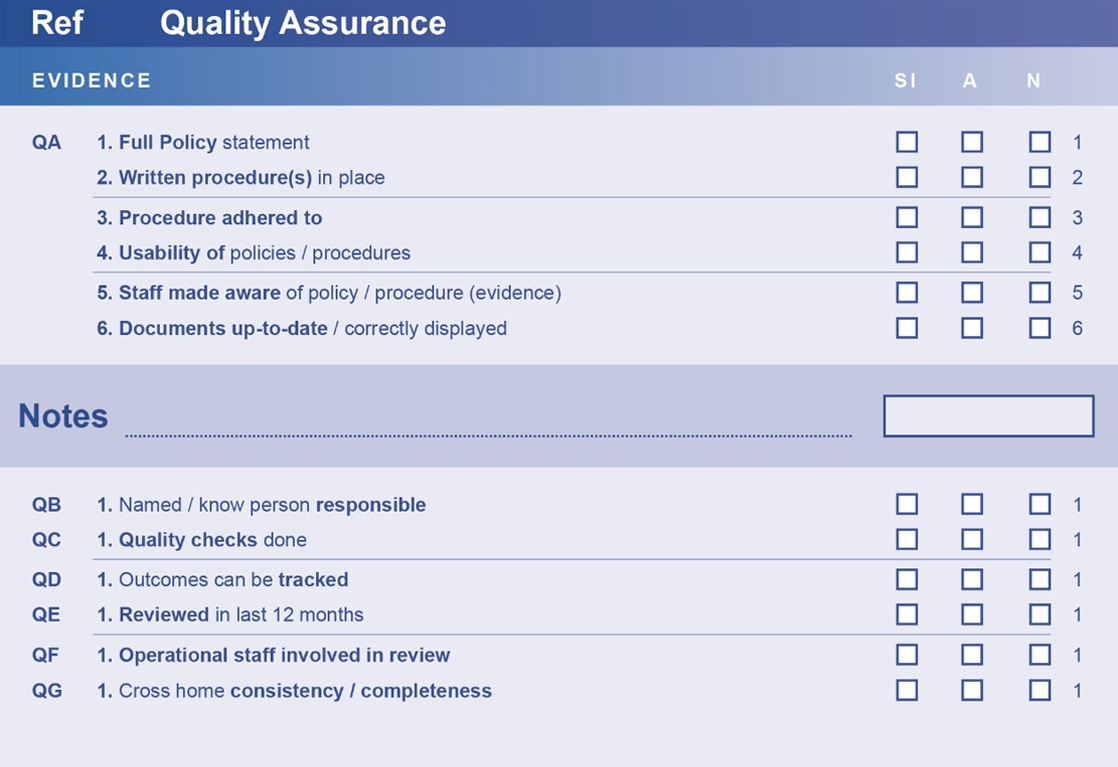The Process
The RDB annual assessment takes between two to five days to complete, depending on the size and categories of care within the home. The rigorous process ensures that the data collected truly reflects the current position of the home.
Click on each of the panels below for specific information related to each step of the process.
1
Registration
The initial registration document before we arrange a visit.
2
Preparation
Completion of the RDB Participant's Workbook.
3
Assessment
An RDB Independent Assessor visits that last between 2 and 5 days.
4
Report
An in-depth report illustrates strengths, and areas to improve.
The Model The RDB model is a dynamic, responsive, evidence based, measurement tool, to ensure the assessment is both comprehensive and reliable. The individual is placed at the heart of the model, regardless of the type of establishment, or the service being offered, therefore care is viewed through the eyes of those who receive it.
The model also encompasses a diverse range of care standards, ranging from the way personal care is delivered to the management of the home and its personnel.

To talk to one of our experts about how an RDB Assessment will help your care home, complete the quick contact form below.
The Five Model
1
Individual
Care
In this section of the model, residents’ living needs before admission, upon admission, day-to-day, over time and in response to changes are considered. It looks at both their personal and interaction needs and how these needs are assessed over time. It also assesses the choices residents have in the provision of care, the attitudes and behaviours of care staff and the home’s mealtime experience.
2
Additional
Needs Care
This section is assessed in addition to the Residential Care Model and depends on the CQC registration category of the home. This includes people who require nursing care or mental health care.
3
Lifestyle
Care
Lifestyle care focuses on the facilities and services that impact on the quality of life of the home’s residents. It considers the home’s attempts to create a pleasant living environment and its social programme. It also considers the additional facilities and services that are accessible by residents within the home or in the local community.
4
Residential
Care
Residential care analyses the home’s ability to deliver best practice through efficient management systems. It looks at the management and administration of the home, the recruitment and knowledge of its personnel, the working practices of staff and adherence to health & safety as well as its responsiveness to change.
5
Continuous
Care
Improvement
This section looks at the home’s on-going commitment to improving standards. It focuses on how the management of the business defines direction and how they actively manage the business and culture to ensure that service needs are met. This involves looking at business performance, staff performance, quality standards and the training and development of personnel.
RDB Care Standards The RDB model evaluates homes against more than 200 RDB care standards, collecting between ten to sixteen items of evidence for each standard
These care standards are drawn from best practice research across the care sector and are tempered by what is realistic and achievable, thus reflecting what good care providers do naturally. An example care standard is shown:
Complete the quick contact form below to talk to one of our experts about how an RDB Assessment will help your care home.

About The Process RBD Star Rating Quality Assurance Standard 25 of the Care Standards are underpinned with a Quality Assurance Standard.
An example below shows they require an additional 6 points of evidence.


Request an Inspection
Fill in your details below, and we will be in touch
"(Required)" indicates required fields








